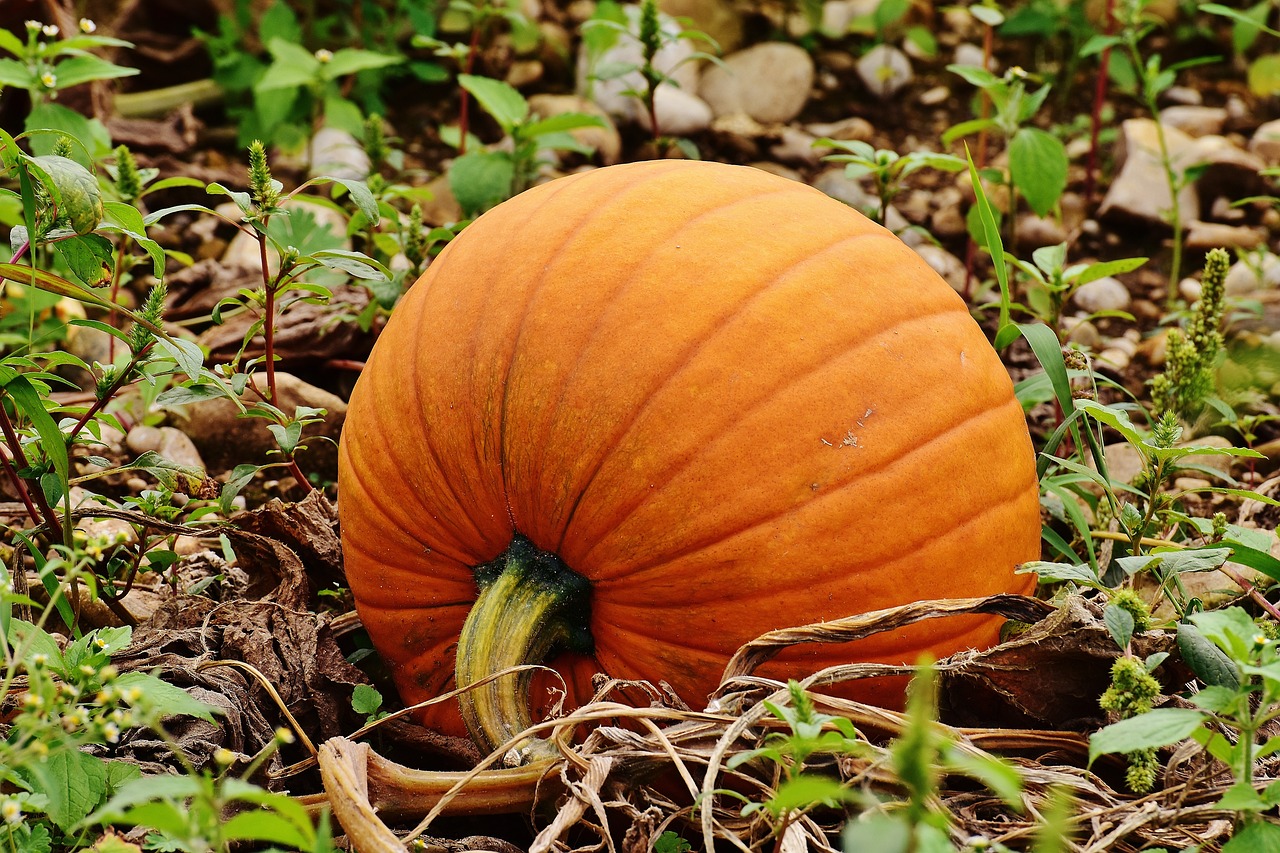
Ah, pumpkins. The iconic emblem of fall, their rotund forms and fiery hues ignite the spirit of the season. But cultivating these autumnal giants isn’t just about tossing seeds in the dirt and waiting for magic. Pumpkins, like all plants, thrive with a little help from their green neighbors. Here’s where companion planting swoops in, transforming your pumpkin patch into a vibrant ecosystem brimming with life – and, of course, the biggest, juiciest pumpkins on the block.
The Power of Plant Pals: Why Companion Planting Works
Companion planting is an age-old practice that celebrates the synergy between different plants. By strategically selecting your pumpkin’s companions, you create a mutually beneficial environment. Here’s how this plant party benefits your precious pumpkins:
- Pest Patrol: Certain plants, like pungent marigolds and nasturtiums, emit strong scents that repel common pumpkin enemies – aphids, squash bugs, and beetles – acting as a natural defense system for your patch.
- Pollinator Powerhouse: Pumpkins are pollinator-dependent, relying on buzzing bees and fluttering butterflies to transfer pollen and encourage fruit set. Companion flowers like borage and cosmos, with their vibrant blooms and nectar-rich centers, become irresistible invitations to these helpful pollinators, boosting your pumpkin’s yield.
- Living Mulch: Low-growing plants like creeping thyme and clover act as living mulch, suppressing weeds and retaining soil moisture, creating a perfect microclimate for your pumpkins to sprawl comfortably.
- Nitrogen Fixers: Legumes, like peas and beans, have a symbiotic relationship with certain bacteria that fix nitrogen from the air, enriching the soil with this essential nutrient that pumpkins crave for healthy growth.
Choosing Your Companions: A Spooktacular Selection
Now that you’ve glimpsed the magic of companion planting, it’s time to assemble your dream team! But remember, not all plants play nice together. Here’s a curated selection of pumpkin companions categorized by their superpowers:
Pest-Repelling Posse
- Marigolds: These cheerful yellow and orange flowers are champions at repelling a variety of pests, including aphids, squash bugs, and nematodes. Their deep root systems also help loosen compacted soil, improving drainage for your pumpkins.
- Nasturtiums: These vibrant flowering vines not only deter aphids and squash bugs but also act as a trap crop, attracting these pests away from your precious pumpkins.
- Mint: The invigorating aroma of mint repels a variety of unwanted insects, including flea beetles and whiteflies. However, keep mint contained, as its aggressive roots can smother other plants. Plant it in pots or use a root barrier.
Pollinator Paradise
- Borage: With its beautiful star-shaped blue flowers, borage is a magnet for bees and other pollinators. It’s also a self-seeding annual, so you’ll have a fresh crop of pollinators every year.
- Cosmos: These cheerful daisy-like flowers come in a range of vibrant colors and are a favorite amongst butterflies, bees, and hummingbirds.
- Zinnia: Another pollinator powerhouse, zinnias offer a dazzling display of colors and shapes, attracting a variety of beneficial insects to your pumpkin patch.
Living Mulch Masters
- Creeping Thyme: This low-growing herb forms a fragrant carpet that suppresses weeds, retains soil moisture, and even adds a touch of culinary delight to your garden.
- Clover: This nitrogen-fixing groundcover not only smothers weeds but also enriches the soil with nitrogen, a crucial nutrient for healthy pumpkin growth.
- Alyssum: This charming little flower boasts a sweet honey scent and forms a dense, low-growing mat that helps suppress weeds and retain moisture.
Nitrogen-Fixing Nifty Squad
- Peas: These nitrogen-fixing legumes add vital nitrogen to the soil, enriching it for your pumpkins’ benefit. They’re also a delicious and nutritious bonus harvest!
- Beans: Like peas, beans are nitrogen-fixing powerhouses that contribute to healthy pumpkin growth. Choose from bush beans for a compact option or let pole beans climb nearby structures.
Planting Pointers for a Spooktacular Season
Now that you’ve chosen your companions, it’s time to get planting! Here are some key things to remember:
- Research Plant Spacing: Different companion plants have varying growth habits. Ensure proper spacing between your pumpkins and their companions to avoid overcrowding and competition for resources.
- Succession Planting: Consider planting fast-maturing companion plants like lettuce or spinach between your pumpkin hills. These will be ready to harvest before the pumpkins take over, giving you a double harvest from your space.
- Interplanting: Don’t be afraid to get creative! Interplant some of your flowering companions directly amongst your pumpkin vines. This not only adds a touch of visual interest to your patch but also provides continuous blooms throughout the season, attracting a steady stream of pollinators.
Beyond the Basics: Unconventional Companions
While the plants mentioned above are classic choices, there are some unconventional companions that can surprisingly benefit your pumpkins:
- Corn: This traditional fall crop can provide much-needed shade for your pumpkins during the hottest parts of the day, especially if you live in a climate with scorching summers. Just ensure you plant corn varieties that mature at a similar time to your pumpkins to avoid unwanted competition later in the season.
- Sunflowers: These towering beauties not only add a touch of whimsy to your patch but also attract beneficial insects like ladybugs, which prey on aphids and other harmful pests.
A Word on Caution: Not-So-Friendly Neighbors
While companion planting offers a wealth of benefits, it’s important to be mindful of plants that can hinder your pumpkin’s growth. Here are a few to avoid planting in close proximity to your pumpkins:
- Potatoes: These compete with pumpkins for vital nutrients and water.
- Cucumbers and Melons: These belong to the same family as pumpkins and can attract similar pests and diseases.
- Squash varieties: While some squash varieties can coexist peacefully, planting different types of squash too close together can increase the risk of cross-pollination, affecting the quality of your pumpkins.
